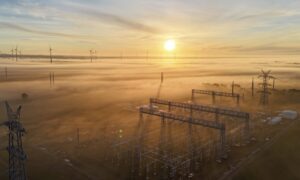Australia has nearly 6GW of committed large-scale wind and solar projects in the development pipeline – that is, projects with all development approvals and financials in place – after a record amount of new capacity was added to the list in 2022.
According to the latest data from the Clean Energy Regulator, updated on Tuesday, a total of 4.3GW of capacity reached a final investment decision over the course of 2022 and has been added to the CER’s committed category.
This means that the total number of renewable energy projects of 100MW or greater that are shovel ready, or “committed,” at the start of 2023 now sits at around 5.9GW (see table below).
This number includes the 756MW first stage of the Golden Plains wind farm in Victoria, and the hefty 923MW Macintyre wind farm in Queensland, which is 70% owned by Acciona, with a 30% stake held by Korea Zinc subsidiary, Ark Energy.

The CER data lists a further 3.3GW of large-scale solar and wind capacity in its “probable projects” category, which is described as having “a high degree of confidence that they will proceed following a public announcement of a power purchase agreement with a strong counter party or other evidence of funding.”
Among the CERs updated list of “probable projects” is Renewable Energy Partners massive 900MW, 166 turbine Proserpine wind farm on Gia People Country north of Mackay, as well as the 600MW Aldoga solar farm, also planned for Queensland.
Federal energy minister Chris Bowen says the nearly 50 per cent jump in annual large-scale wind and solar farm investment commitments compared to 2021 reflects the policy stability the Labor Party has delivered to the renewables sector since its election in May of 2022.
“This investment means new jobs across the country, and will support emissions reduction in the electricity sector and puts us on the way to 82% renewables by 2030,” Bowen said on Wednesday.
“A majority of this increase in investment was after last year’s election, which proves renewable investors are responding positively to the Albanese government’s strong emissions reduction targets and know that Australia is back open for business in clean energy,” he said.
This particular claim is difficult to verify using the CER data, which does not give a date for when each of the “committed” projects officially achieved that status.
But there’s no denying that investor confidence appears to be thriving, with a number of new big international names joining the Australian renewables market over the past few months, including Malaysian oil giant Petronas just this week.








